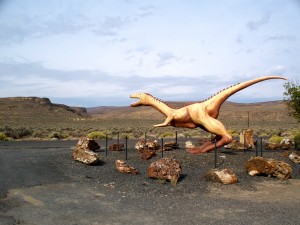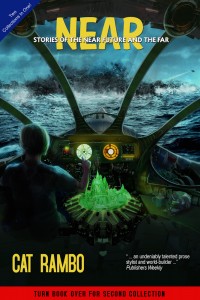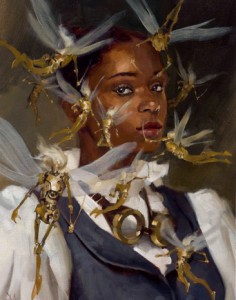
If your world has something unusual (like dinosaurs), it needs to be signaled early on, or else you will surprise and alarm your readers when someone gets eaten by a Tyrannosaurus.
In the course of one workshop the topic of writing about rape came up and Jim C. Hines has provided a timely article about it in the most recent Apex Magazine. In brief, Don’t use rape as 1) easy motivation for a character or 2) shorthand for how bad someone is and do some research about things like the mental aftereffects if you’re going to write about it.
If you want to read a piece that does it well (and harrowingly), I would suggest The Sparrow by Maria Doria Russell. I also mentioned Susan Griffin’s Woman and Nature: The Roaring Inside Her.
Also mentioned last week as a great book for looking at sentence and paragraph level writing:
Style: Ten Lessons in Clarity and Grace
Landscape and long descriptions are often a feature of fantasy and science fiction. Often the purpose is to look gee-whiz pretty, but it can inform the story in many ways. Here, for example, is the beginning of Gormenghast:
Gormenghast, that is, the main massing of the original stone, taken by itself would have displayed a certain ponderous architectural quality were it possible to have ignored the circumfusion of those mean dwellings that swarmed like an epidemic around its outer walls. They sprawled over the sloping earth, each one half way over its neighbor until, held back by the castle ramparts, the innermost of these hovels laid hold on the great walls, clamping themselves thereto like limpets to a rock. These dwellings, by ancient law, were granted this chill intimacy with the stronghold that loomed above them. Over their irregular roofs would fall throughout the season, the shadows of time-eaten buttresses, of broken and lofty turrets, and, most enormous of all, the shadow of the Tower of Flints. This tower, patched unevenly with black ivy, arose like a mutilated finger from among the fists of knuckled masonry and pointed blasphemously at heaven. At night the owls made of it an echoing throat; by day it stood voiceless and cast its long shadow.
Things worth noticing about that paragraph:
- The phrase “certain ponderous architectural quality” has its own ponderous architectural quality.
- The focus of the novel is the castle. Same with this first paragraph.
- There’s a tension between the mouldering castle and the humans around it, whose dwellings are described as “an epidemic” and “clamping” (great verb!) themselves “like limpets.”
- The tower is compared to a mutilated finger, it points blasphemously, it’s filled with owls, all things that will resonate throughout the book.
- The last sentence slays me with its beauty. Isn’t that nice? Good use of a semi-colon, too.
Description needs to accomplish more than gee whiz. It can:
- provide sensory stimulation
- convey information about the thing being described
- convey information about the character through whose perceptions the description is filtered
- convey information about the context of the thing being described, i.e. the setting/world
- convey tone
- convey style
- underscore or advance motifs and metaphors
Too little description and the reader has nothing to hold onto. Too much and they feel buried.
In writing description, think about the impression you’re trying to create. Visualize the scene – what is the atmosphere? What does it look/sound/feel/smell/taste like?
Why it’s worth being precise: http://www.youtube.com/watch?feature=player_embedded&v=C_AmdvxbPT8
Good verbs add energy, sensory input, interest, and precision. Did verbs for description exercise in class.
Description adds texture, creates “crunchy†prose. Don’t write prose that is dull as oatmeal. Give us a meal – a solid, meaty verb or two, an edge of sweet lyricism, a dash of bitter irony, the precise crunch of details, a texture we can run our tongue over, and tiny seeds of unexpected words that we can pop between our teeth, one by one.
Some ways to deliver information
Through dialogue of primary character(s)
Through dialogue of secondary character(s)
Through description
Through embedded documents
Through exposition
Twin Peaks scene where Dale Cooper goes over the suspects while throwing rocks is an example of getting away with lots of exposition by making it weird and entertaining.
Enjoy this writing advice and want more like it? Check out the classes Cat gives via the Rambo Academy for Wayward Writers, which offers both on-demand and live online writing classes for fantasy and science fiction writers from Cat and other authors, including Ann Leckie, Seanan McGuire, Fran Wilde and other talents! All classes include three free slots.
Prefer to opt for weekly interaction, advice, opportunities to ask questions, and access to the Chez Rambo Discord community and critique group? Check out Cat’s Patreon. Or sample her writing here.






